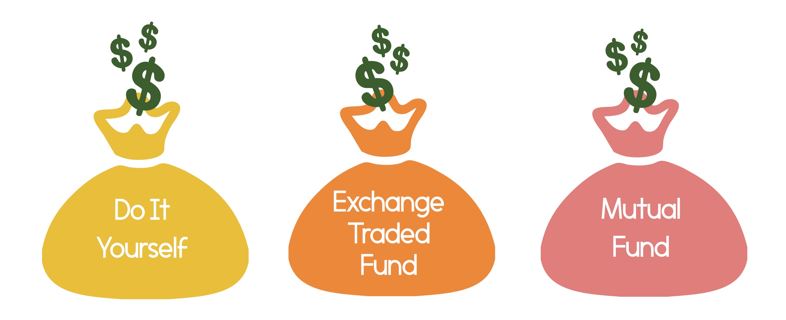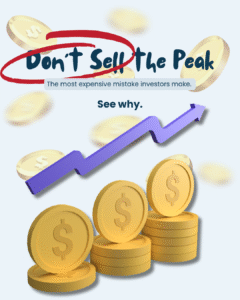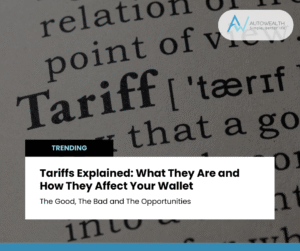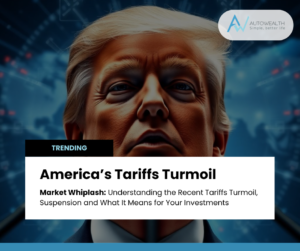Investment strategy matters.
I guess you have heard all about this golden investment rule – “do not put all your eggs in one basket”. You risk suffering catastrophic losses when you put all your money into a single asset.
Why?
Suppose there are 10 equities available for investment in the Year 2016:

All eggs in a single equity – Win big & lose big:
Let’s say you happened to pick the right equity to invest. In the best-case scenario, you would have a returns of 13% by investing in Equity F.
But don’t be too happy yet, because the reverse could happen as well. If you happened to pick the wrong equity, in the worst-case scenario, you could end up with an abysmal returns of -17% by investing in Equity A.
After all, investing is not intuitive. It is not easy to make predictions.
A good week in the market can leave you feeling like a genius, but what happens in a bad week? To protect yourself from catastrophic losses, diversification is key.

Diversification – Eggs in many different baskets
Equity diversification refers to diversifying your investments across multiple company equities on 3 different levels – across market sectors, geographical regions and company sizes.
Using the same returns table above, if equity diversification was carried out – with your money equally distributed across all 10 equities. Despite adverse market conditions (i.e. 40% of the market suffered negative returns/20% of the market suffered catastrophic losses of -10+%), you could still have walked away with a returns of 2%. The returns may not be high, but through diversification, you can be sure that you would not be subject to catastrophic losses of -10+% even with adverse market conditions.

How does diversification reduce risk?
When sufficiently diversified, the negative performance of one asset would be offset by the positive performance of another asset. Because of the numerous equities held, the performance of your portfolio would be more even out. The outcome is a more consistent returns profile.
The proper way to diversify
While it is true that holding a few dozens of random equities would have amount to equity diversification, to really reap the benefits of diversification is not as simple as it looks. The choice should not be random. A good diversified portfolio should receive exposure from multiple distinctly different equity classes – each with different risks, returns and correlations to one another. Risk becomes lower while risk-weighted returns becomes higher as you hold more and more assets that are negatively correlated to one another.
How to build a diversified equity portfolio?

(1) Do-it-yourself (DIY)
The simplest way is to buy multiple stocks indivdually through a brokerage company. While it offers the highest level of control & customisation, to be really effective, the DIY method also requires a higher level of time committment and potentially a higher cost if it is not executed efficiently.
For example, let’s say you intend to build a portfolio of equities from 40 different companies with a total initial capital outlay of $10,000. If the brokerage firm charges $10/transaction, transaction fees would be $400. This translates to 4% of your inital capital. 4% of your capital would have been lost upon your entrance into the market, and another 4% would be lost when you decide to exit the market. Once you do your math, you would realize that even with a respectable annual returns of 6-7%, you could not even cover the transaction fees in one year!
On the other hand, if you have a initial capital outlay of $200,000. With the same transaction fee, it would only cost you 0.4% of your initial capital for the same portfolio of equities.
(2) Mutual Fund
Or you could “outsource” your portfolio construction to a mutual fund. A mutual fund is an investment vehicle that pools together money from a large number of investors. The money is then collectively deployed and monitored by professional fund managers. Mutual funds charge a management fees in return for their services.
Most mutual funds would commit to a diversified portfolio of equities. Investing through a mutual fund would give you a decently diversified investment portfolio. However, the level of diversification differs greatly from funds to funds. Furthermore, the management fees per year can be quite substantial, eating into your returns year after year. Therefore, while investing through mutual funds is the easiest way to divest, it comes with a lower level of control, with respect to the levels of diversification, and also a much more subdued returns potential due to the much higher fees involved.
(3) Exchange-Traded Fund (ETF)
Finally, if you do not want to pay high fees and have no need for professional fund managers to decide what to buy for you, you can consider buying an ETF. An ETF is a marketable security that are bought and sold off stock exchanges much like a regular equity. Like mutual funds, ETFs are typically made up of multiple equities. Individually, each ETF would already be decently diversified. You could of course buy a number of ETFs to further diversify until you have reached your desired level of diversification. In essence, diversification through ETFs is very similar to DIY diversification. The key difference is the amount of transaction cost involved in constructing a portfolio. You could easily build a portfolio of 40 equities through the purchase of a single ETF. The transaction cost involved would be $10 as opposed to $400 when you buy each of the equities individually.
Have fun diversifying! It is an absolute must if you are looking to prevent catastrophic risks!












